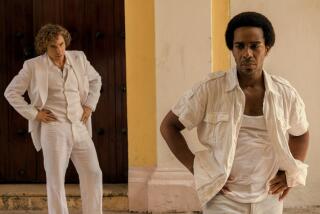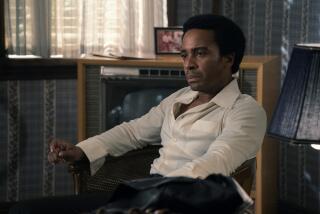Sure, We Know They’re Trendy. But That Doesn’t Excuse Bad Air and Bad Manners.
The other day I walked into my office and was greeted by a billow of blue smoke. My contact lenses burned, I felt a wave of nausea and I flung open a window to clear the air of what smelled like wok-fried cowboy boots. My office is in a corner of an airy loft with 15-foot ceilings, and I couldn’t imagine what could have permeated this much space. Then it hit me: the latest big thing. “Whoever is smoking a cigar,” I shouted, “will you please take it outside?”
Dave, the graphic designer down the hall, walked in, proudly puffing on a 5 5/8-inch Upmann Churchill. “Don’t you think they have a wonderful, romantic, masculine aroma?” he asked, holding out the stogie and staring lovingly at the ash. I diplomatically assured him that it was better than the time I was locked in a New York City taxi with an Aramis-soaked cabby.
He was oblivious. “Good cigars have such a remarkable, subtle flavor,” said Dave, who concedes that part of the pleasure is the ritual of male bonding that goes with it. He told me about his most memorable smoking experience when he was at a conference in Salzburg, at the Schloss Leopoldskron. “My brother took me to a secret room that Archbishop Firmian had built. It was filled with huge, overstuffed chairs and a gigantic porcelain fireplace. In that room, John F. Kennedy, Churchill, even Goethe had sat and smoked their cigars. I sat there smoking my cigar and thought, wow, if only these walls could talk to me.”
They’d probably be saying, “Please rub me down with 409.”
“Cigars are special,” Dave insisted. “I can really understand why it’s such a rage right now.”
Frankly, the craze mystifies me, though our society does have a weakness for addictive brown substances. First it was designer chocolate, then coffee and now cigars. Hip restaurants that a year ago banned cigarettes are rushing to accommodate cigar smokers with special cigar bars and cigar nights, the most notable of which is Arnold Schwarzenegger’s Schatzi on Main, where Arnold smokes his favorite, the appropriately named Punch Punch, on the first Monday of every month. To date, I’ve seen ads for cigar cruises, cigar tastings, cigar weekends at Las Vegas casinos. (Can a cigar spa package be far behind?)
Smoke shops are popping up faster than espresso bars and frozen yogurt outlets, each boasting the finest puros from Nicaragua, the Dominican Republic, Honduras, Jamaica, Mexico--coronas, presidentes, robostos and panatelas supposedly hand-rolled by legendary Cuban maestro de puro who fled Castro’s regime with a pocketful of seeds. Also on sale are nifty accouterments like “Exquisite Precious Wood Smoker’s Furniture” (fancy cedar-lined humidors designed to re-create the tropical climate in which the tobacco was grown), double-edged guillotine cutters and the shockingly slick and thick magazine Cigar Aficionado. (Editor and publisher Marvin R. Shanken is the conspicuous consumer who paid $575,000 at Sotheby’s for JFK’s humidor).
Flipping through the latest issue, I was struck by the absence of surgeon general warnings on the numerous cigar ads. Niki Singer, senior vice president at Cigar Aficionado, acknowledged that while cigars aren’t about to be sold at vitamin stores, the health dangers are not that great: “We have lots of lots of doctors who are subscribers, who say it’s beneficial in reducing stress. We certainly know that it doesn’t have the health risks of cigarettes.” Dr. Raymond J. Melrose, a pathology professor at the USC Dental School, disagrees. He believes the boom is a tobacco industry marketing ploy. “There is no such thing as a safe tobacco product,” he says. He faxed me over an American Cancer Society fact sheet that states that cigar smokers have four to 10 times the risk of dying from laryngeal, oral and esophageal cancers as nonsmokers.
Still, far be it from me to condemn a phenomenon without experiencing it firsthand. I dragged my friend Debbie to Phillip Dane’s Cigar Lounge in Beverly Hills. An amiable 29 year old, Dane has been smoking cigars since he was 15. “It’s one of the last great vestiges for getting away from the craziness,” he says. “You take your time, kick back, enjoy your cigar. We get a wide range of customer, from the young, hip smoker to the older, more accomplished ones.”
Dane gives us a tour of his humidor, essentially a huge walk-in closet where the cigars are kept at 70% humidity, and lockers for private storage can be rented for $75 a month. Unlike cigarettes, which contain additives and paper, cigars are entirely made of three types of tobacco: filler, binder and wrapper. “A lot of time and energy and love goes into crafting cigars,” says Dane, adding that in the current boom market, many manufacturers could sell three times as many cigars as they produce. (Imports rose from 100 million in the 1980s to 176.5 million last year, and this year imports are expected to top 240 million.) Cuban cigars are, of course, illegal, but connoisseurs have no trouble finding them.
Debbie and I are escorted past the shelves filled with “Big Butt” T-shirts and baseball caps, past the vintage Coke machine, into the lounge.
“It’s like an Oregon fern bar, without the ferns,” Debbie exclaims. (Indeed, no fern could possibly live in the miasma).
Despite the media reports that women are lighting up in record numbers, a set designer would have a difficult time conjuring up a more masculine space. The walls are covered with rough wood paneling and decorated with bullfighting posters and antique photos of cowboys and Indians. Tables with big cut-glass ashtrays are arranged in cozy groupings around a blazing (even though it was July) fake fireplace. The pricey, modernistic chairs are even upholstered in fabric imprinted with racing car scenes. It reminded me of a fraternity house, though the young men casually dressed in shorts and T-shirts are more subdued. They converse earnestly, occasionally sucking their cigars, but far more frequently they hold the stinky things out at arm’s length and gaze at them with unfathomable glee and fascination.
Debbie and I are given a complimentary Cohiba panatela from the Dominican Republic. “Are you supposed to remove the band?” Debbie asks, and Dane explains that while cigar bands were originally kept on to protect men’s white gloves from the oil, nowadays leaving them on is considered bragging.
“I really like the ritual,” says Debbie, adroitly balancing her glass of San Pellegrino and her cigar. “Going into the humidor, picking out your cigar, sitting back, smoking . . . I love that brown leaf and the texture. It reminds me of smoking a cigarette. I always loved that.”
I was a closet smoker and I’m terrified of becoming one again. I puff decorously, careful not to inhale, and am pleasantly jolted by a rush of nicotine, a substance I have been known to drive to Tijuana to purchase in the form of Nicorette gum. I don’t cough or feel nauseous though I feel silly holding a cigar and am relieved when it goes out. Michael Camacho, the manager, gallantly relights it. I ask him how he got started smoking. “My grandfather, who I never met, was a cigar smoker,” says Camacho. “He was a merchant marine, and he’d leave for years at a time and come back with boxes of cigars. I wanted to be like him.”
“You were influenced by someone you never met,” Debbie marvels. “Maybe it’s genetic.”
“Cigars are pure, from Mother Earth,” he says. “You know, there is an Indian tribe in Puerto Rico that does a ritual dance of purification. They blow cigar smoke into their houses.”
I don’t remember Indians in Puerto Rico. “Where are they located? Next to the Dorado Hilton?”
My throat is beginning to burn and my hair smells like decomposing flesh, so I suggest we leave. We stop briefly at Hamilton’s at the Wine Merchant, a stuffy lounge up the street owned by George Hamilton, the patron saint of all that is unhealthy. The decor is Ralph Lauren run amok--leather armchairs, portraits of hunting dogs on the wall, wall sconces in the form of monkeys holding lampshades. We wander around looking for cigars. None of the old boys smoking and sipping brandy make a move to help. I’m startled by a larger-than-life portrait of the actor. “Look, there’s George Hamilton,” I whisper to Debbie.
“Everyone here looks like George Hamilton,” she replies.
We decide to call it a night. By the time I arrive home, I’m sneezing and the lingering smoke has settled in my sinuses. “Phew,” says my husband. I strip off my clothes, take a shower and wash my hair, but I can’t get rid of the scorched earth taste. I want to saw off the front of my face and clean out my sinuses with a high-pressure hose.
The next day, I dump my clothes off at Hangers, a dry cleaner in Marina del Rey. Steve Sussman, the owner, is feeling the effects of the cigar craze. “I used to go through one quart of deodorizing solution every month, now it’s a quart every two weeks,” Sussman says. “We also have a problem with people walking in smoking a cigar. You can’t have people smoking cigars with thousands of clean clothes on the rack, so I have to politely tell them to take a hike.”
Coming soon, Cigar Night at the dry cleaner.


